I'm running a nonlinear least squares using the minpack.lm package.
However, for each group in the data I would like optimize (minimize) fitting parameters like similar to Python's minimize function.
The minimize() function is a wrapper around Minimizer for running an optimization problem. It takes an objective function (the function that calculates the array to be minimized), a Parameters object, and several optional arguments.
The reason why I need this is that I want to optimize fitting function based on the obtained fitting parameters to find global fitting parameters that can fit both of the groups in the data.
Here is my current approach for fitting in groups,
df <- data.frame(y=c(replicate(2,c(rnorm(10,0.18,0.01), rnorm(10,0.17,0.01))),
c(replicate(2,c(rnorm(10,0.27,0.01), rnorm(10,0.26,0.01))))),
DVD=c(replicate(4,c(rnorm(10,60,2),rnorm(10,80,2)))),
gr = rep(seq(1,2),each=40),logic=rep(c(1,0),each=40))
the fitting equation of these groups is
fitt <- function(data) {
fit <- nlsLM(y~pi*label2*(DVD/2+U1)^2,
data=data,start=c(label2=1,U1=4),trace=T,control = nls.lm.control(maxiter=130))
}
library(minpack.lm)
library(plyr) # will help to fit in groups
fit <- dlply(df, c('gr'), .fun = fitt) #,"Die" only grouped by Waferr
> fit
$`1`
Nonlinear regression model
model: y ~ pi * label2 * (DVD/2 + U1)^2
data: data
label2 U1
2.005e-05 1.630e+03
$`2`
label2 U1
2.654 -35.104
I need to know are there any function that optimizes the sum-of-squares to get best fitting for both of the groups. We may say that you already have the best fitting parameters as the residual sum-of-squares but I know that minimizer can do this but I haven't find any similar example we can do this in R.
ps. I made it up the numbers and fitting lines.

